There probably isn’t a more misunderstood marketing term than “water-resistant”. Almost every wristwatch is said to be water-resistant up to some depth (in feet or meters), which certainly sounds great. Some even claim to be waterproof. But, what does either one of those terms really mean?
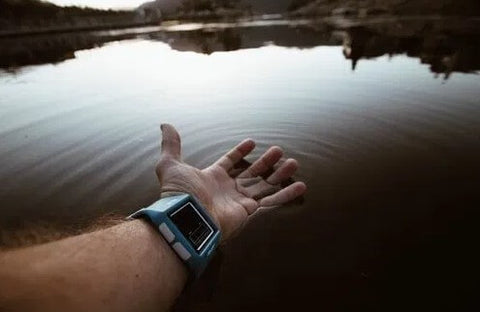
Regardless of whether a watch claims to be water-resistant or waterproof, there is one standard rating system that matters: the IP Code. IP stands for “Ingress Protection” and an IP rating is used to clarify an item’s resistant to both solid and liquid incursion. The rating is used for all kinds of products (including mobile phones), but of course, for our interest, we’re only concerned with watches.
Let’s look at the 10-level IP water-resistance ratings and other important terms you need to know.
Watch Water Resistance Ratings
What is the IP Code?
Before we break the IP Code down, we should first address exactly how the rating system works. An IP rating is determined by the International Electrotechnical Commission. While the IP Code isn’t technically the only game in town when it comes to rating water resistance, it is by far the most trusted, in large part because the IEC is so well-established.
An IP rating is expressed with a simple code: IP followed by two digits (e.g., IP22). The first of the two digits express the level of resistance to solids, whereas the second digit expresses resistance to liquids. While many products are tested for both, watch manufacturers only care about water resistance, so they rarely if ever test for both. For this reason, watches are usually rated as IPX with a digit following the “X”. The X doesn’t mean the product isn’t resistant to solids, it just means no testing (or not enough testing) has been done to determine a rating.
This is why, when you find a watch’s IP rating, they are listed as IPX0 through IPX9. With this understanding in hand, we can now look at each level of water-resistance rating, starting with the lowest.
IPX0
You won’t see a watch advertised as IPX0 just as you wouldn’t see a car advertise that it gets a mile to the gallon. IPX0 literally means that a watch is “not protected” from water, like, at all. It would honestly be surprised to find any watch that was rated IPX0, if only because, if such a shoddy watch was made, the manufacturer wouldn’t bother having it tested.
Even watches made out of paper tend to offer some level of water resistance. If you did find a watch that was rated IPX0, you’d be better off leaving it in the watch box. A gentle rain could destroy it.
IPX1
Technically, a watch that has been rated IPX1 offers resistance against dripping water. It would be fine if a few drops fell on it vertically from the sink or in light rain, but it would be foolhardy to wear it out in, say, London. Like an IPX0 rating, you’ll never see a watch advertised as being IPX1 rated, but there are some cheapy watches that would fit.
Some knock-off, generic “smartwatches” (really just glorified step counters) on the market lack any real-world water resistance. Watches like the cheekily named “iTouch”, which can be found at Nordstrom’s Rack, don’t have the durability or water-resistance of the big-name smartwatches. That said, if you want a cheap watch with some health trackers and you aren’t likely to go running in the rain, it isn’t a bad deal.
IPX2
Improvements in IP ratings are fairly incremental. For that reason, the only difference between an IPX1 rating and an IPX2 rating is an angle. That is to say, an IXP2-rated watch is resistant to dripping water, even at a 15° angle, which, okay. This makes an IXP2 rating slightly more practical than an IXP1 – no one keeps their wrist completely horizontal at all times – but it hardly counts as water-resistant in any practical sense.
Again, don’t expect any advertising campaigns around IXP2 ratings, but if those inexpensive smartwatches do have any water resistance, that’s probably their limit. For the price, it might be worth it for some people.
IPX3
This is where we start to actually see a level of water resistance that could be considered noticeable. A rating of IPX3 means that a watch can resist water spraying at it, even up to an angle of 60°. That offers some relatively useful protection for anyone who might wear their watch while washing the dishes. Essentially, if you get splashed on, you’ll be fine.
For some electronic products, an IPX3 rating is pretty good, but for a watch, it’s not very impressive. You can’t swim or even shower in an IPX3-rated watch, and if it fell off in the sink, it’d probably be corrupted. That said, it’s not out of the realm of possibility to find an IPX3-rated watch. If you find a cheap digital watch that doesn’t mention water resistance, it could be in this category.
IPX4
We’re approaching the realm of water-resistant that might actually make a difference in your purchasing decision, but we’re not quite there. An IPX4-rated watch can take a splash from any direction; angles no longer matter. This obviously doesn’t sound too impressive, but that distinction does matter.
As long as there was no expectation of falling overboard, you could feel relatively confident to wear such a watch out on a fishing boat. For instance, this SUNROAD digital sports watch is advertised as a fishing watch and would be quite handy so long as it’s not submerged. The name uses the term “waterproof” which it definitely is not, but we’ll discuss that later.
IPX5
Finally, we’re getting somewhere. An IPX5-rated watch is resistant to water projected from a nozzle. It has to be a low-pressure spray, but the watch will be fine with a steady stream, such as from a garden house or a showerhead. This makes wearing such a watch considerably more convenient. It’s still nowhere near being a dive watch, but it will hold up to most day-to-day conditions.
Though not as prominent in the market, Sony’s officially named SmartWatch is a well-priced smartwatch. For people who want something more durable than an off-brand smartwatch, but don’t want to invest in an Apple or Samsung, Sony isn’t a bad alternative. Their second generation was rated as IPX5, as well as IPX7.
We’ll explain why a couple of paragraphs down.
IPX6
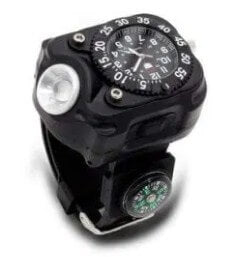
This is the last of the incremental IP ratings. An IPX6-rated watch can take a powerful stream of water from any direction, like say from a high-power hose. This type of water resistance would be more than enough for your daily routine and even some more water-intensive activities. Still, though, this doesn’t mean the watch should go underwater, necessarily.
Specialty sports watches like this a multi-function bike flashlight/watch below are often IPX6-rated. This means that if you go riding in extreme conditions with the risk of a sudden downpour, the watch will make it through with you. Such watches are suitable for consummate outdoors people.
IPX7
Up until this point, the increasing numbers of the IP Code have indicated incremental improvements in water resistance. With the IPX7 and IPX8 rating, though, the measurement is slightly different, which is why a watch can be rated both IPX5 and IPX7.
At this level, the rating is about submersion into water. In the case of IPX7, that means submersion up to one meter underwater for up to 30 minutes. This measure is just as much about the amount of pressure the watch can withstand as it about its ability to prevent water from penetrating the case. It’d be rare to find a good watch that was only rated IPX7.
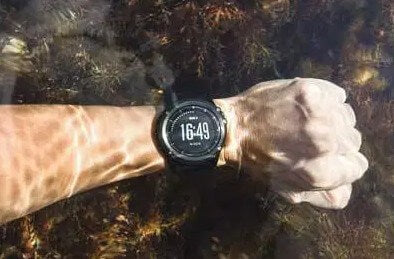
Ironically, one of the most technologically advanced watches (when it was released), the first-generation Apple Watch (still available refurbished on Amazon), was only IPX7. This makes some sense, as Apple was new to the watch game. Smartphones aren’t expected to be taken into the water, so it’s no surprise the first Apple Watch lacked in this regard. The later generations of the Apple Watch have upped their water resistance, but not by a ton.
IPX8
If a watch boasts that it is water-resistant, then you can bet it’s IPX8-rated. Such a watch can be submerged underwater at depths greater than one meter and for a sustained amount of time. As IPX8 represents the upper range of water resistance, any watch that can be submerged in deep water for any amount of time qualifies.
This means that entry-level Timex and a professional-grade diving watch (like Garmin’s Descent) are all within the category. Once a watch has been designated IPX8, it’s up to the manufacturer to provide specific details about depth and more. This is why you’ll often see advertising talk about atm, a term will explain briefly.
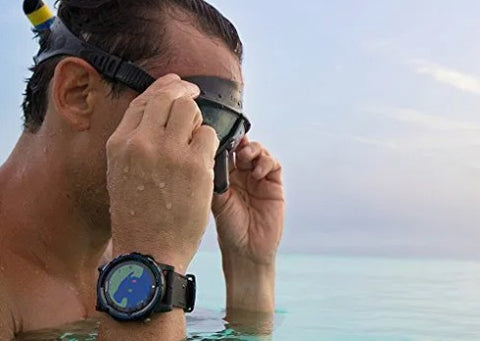
IPX9
An IPX9 rating doesn’t really exist for watches. The 9 rating exists for specially rated equipment meant to take extreme pressure and temperatures. Theoretically, a watch could be made that was rated up to this level, but there’s no conceivable reason anyone would ever do that. The IPX8 rating is more than sufficient for any wristwatch.
Watch Resistance: What does ATM stand for?
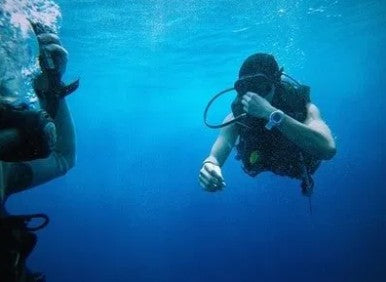
While the IP Code is useful for manufacturers and marketers, for the average consumer, those ratings probably don’t mean much. It’s a bit too technical. Generally, when a consumer sees a watch advertised, they see water resistance expressed with a different set of letters: ATM
The term “atm” is not an acronym in this setting. Instead, it is a shortening of the word “atmosphere,” and it refers to the amount of pressure exerted as you dive below sea level. As you dive, the atmosphere increases every 10 meters. This means, if you’ve seen a watch advertised as water-resistant up to 3 atm, it’s resistant up to 30 meters; likewise, 5 atm is 50 meters.
Anything below 10 atm shouldn’t be worn for deep-sea diving, but most such watches would be fine for snorkeling or other water activities. For instance, Garmin’s Vívomove smartwatch, a well-priced alternative to the Apple Watch, is rated at 5 atm. It could be worn for a swim just as it would be fine in the shower.
Most quality dive watches (ones actually intended for diving) go are resistant up to 200M – 300M. For example, all of the watches on our list of best dive watches under $500 are resistant to at least 200M (20 ATM).
At 300M and above, watches are suitable for saturation diving (helium enriched environment) and there are even are some high-end dive watches rated to 1000M and beyond…for very serious divers.

Watch Resistance: What does BAR stand for?
As with basically all possible measurements, if scientists can come up with one way of measuring something, they can come up with two.
Sometimes, if you don’t see water resistant described in terms of atm, it’ll be described in bars.
Bars are just another way of measuring water pressure. Confusingly, they’re pretty much the same as ATM (give or take some precise measurements that no regular human being will ever notice).
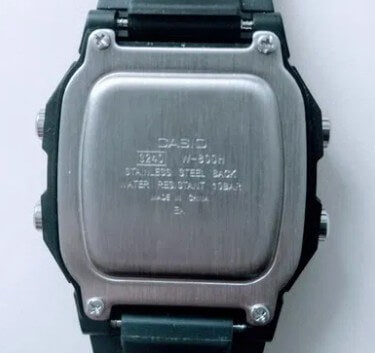
Famously, when developing the Casio G-Shock line of watches, the head designer, Kikuo Ibe, used a “Triple 10” rule to guide the design. The G-Shock line was commissioned to be a series of nearly indestructible watches.
Toward this goal, Ibe wanted the watch to be able to sustain a 10-meter drop, have a 10-year battery, and be water-resistant up to 10bar (or 100 meters). Modern G-Shock watches have gone far beyond the 10bar mark, with most, like the Solar Mudman is water-resistant up to 200 meters.
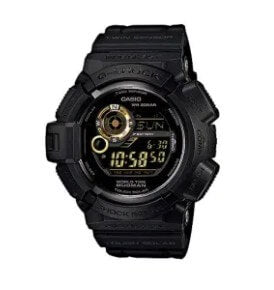
Is my watch waterproof?
Most watches are advertised as water-resistant, and that’s because there really isn’t an industry-standard definition for waterproof. If by waterproof, someone means a watch that is completely and utterly unaffected by water or water pressure, well, that doesn’t really exist. When advertisers use “waterproof”, they just mean water-resistant and hope no one looks into it.
The thing is, you don’t need your watch to be waterproof. The best dive watches could go far deeper into the sea than your own body could. If you’re concerned about your watch not being able to survive your unusually wet lifestyle, just invest in a certified dive watch.
Whether rated in terms of atm, bar, meters or feet, the important thing is that there is a big difference between a watch that is intended for swimming and one that is designed for diving.
Unless you’re specifically looking for the technical specs, you’re unlikely to see a watch’s IP rating mentioned in the ad copy. Still, you can bet legitimate watch manufacturers have had their watches tested. If having a water-resistant watch is important to you, check for both its IP rating and the atm or bar depth.


